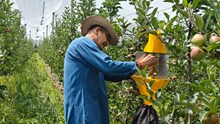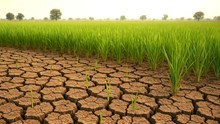
The Food and Agriculture Organization (FAO) of the United Nations has reported a decline in global food commodity prices for January 2025. The FAO Food Price Index fell to 124.9 points, marking a 1.6 percent decrease from December. This drop was largely driven by lower international prices for vegetable oils and sugar. Despite this decline, the index remained 6.2 percent higher than the same period last year but 22 percent below its peak in March 2022.
The FAO Sugar Price Index experienced a significant drop of 6.8 percent from December and was down 18.5 percent compared to January 2024. This decline was attributed to favorable weather conditions in Brazil and India's decision to resume sugar exports, improving global supply prospects. Similarly, the FAO Vegetable Oil Price Index fell by 5.6 percent, reversing recent gains. Palm and rapeseed oil prices saw notable reductions, though soy and sunflower oil prices remained stable. Despite the drop, vegetable oil prices were still 24.9 percent higher than a year ago.
The FAO Meat Price Index also recorded a decline of 1.4 percent in January, with lower prices for ovine, pig, and poultry meat overshadowing an increase in bovine meat prices. Meanwhile, the FAO Cereal Price Index saw a slight increase of 0.3 percent from December, although it was still 6.9 percent below the level recorded in January 2024. Wheat export prices remained relatively stable, while maize prices rose due to lower production and stock forecasts in the United States. The FAO All Rice Price Index dropped by 4.7 percent, reflecting ample exportable supplies.
In contrast, the FAO Dairy Price Index rose by 2.4 percent from December and was 20.4 percent higher than in January 2024. This increase was mainly driven by a 7.6 percent surge in international cheese prices, which outweighed declines in butter and milk powder prices.
FAO’s latest Cereal Supply and Demand Brief highlighted key cropping trends for 2025. Winter wheat planting in the northern hemisphere concluded in January, with increased sowings in France, Germany, and the UK, while a reduction was observed in Russia due to weather factors. Maize harvests in the southern hemisphere are set to begin in the second quarter of 2025, with better yields expected in Argentina and Brazil. Higher maize prices have also encouraged increased plantings in South Africa.
The FAO has raised its forecast for global cereal consumption in 2024/25, expecting a 0.9 percent increase to 2,869 million tonnes, mainly due to greater maize use for animal feed. However, world cereal stocks are projected to decline by 2.2 percent by the end of the 2025 season, largely due to a significant reduction in U.S. maize stocks. The global cereal stocks-to-use ratio is expected to fall but remain at a stable 29.8 percent.
International cereal trade is forecasted to contract by 5.6 percent in 2024/25, mainly due to reduced demand from China for barley, maize, and wheat. FAO has also lowered its projection for total global cereal production in 2024 to just under 2,841 million tonnes, reflecting a 0.6 percent decline from 2023. This reduction is mainly attributed to lower maize production in the U.S., where late-season moisture stress impacted yields.
However, higher-than-expected rice production in China, Mali, Nepal, and Vietnam has led to an upward revision of global rice output, now forecasted to reach a record 539.4 million tonnes in 2024/25, marking a 0.9 percent annual increase.















